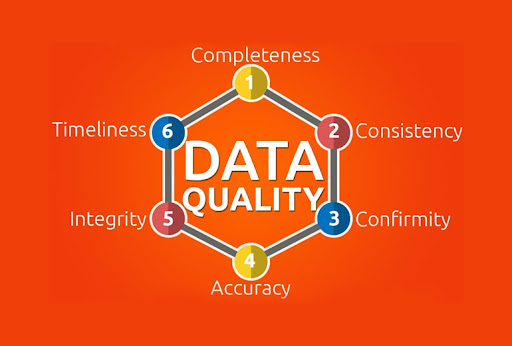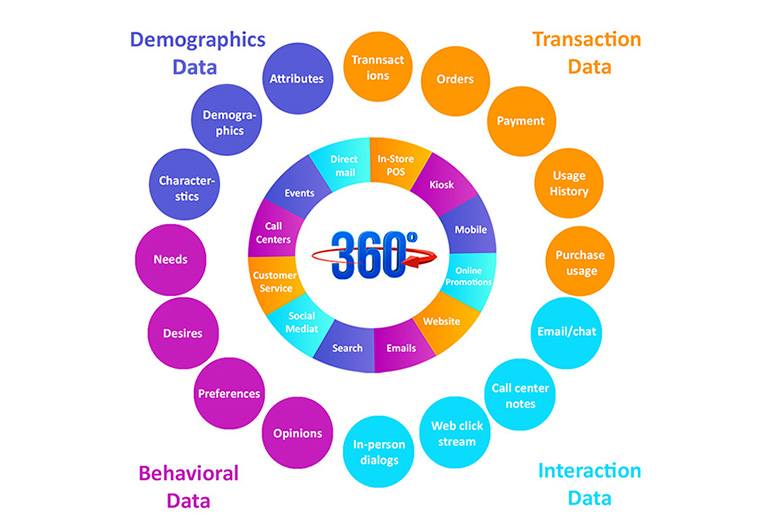Do you know how single customer view is critical to business success?

In this modern world, with multiple touchpoints, other businesses may grab your customers’ attention in a moment. Your customers may spend their money on your competitor’s business or others because of their service, a great impression on one interaction, or the information that is more accessible as reviews, feedbacks, testimonials, etc., about their company. Your customers may connect to any other businesses across the world at any time through ads, social media, emails, or any medium.
Similarly, other businesses may use data and attract your loyal customers with a great personalized experience, deals, cashback, etc. Furthermore, your customer may expect the same kind of services, quality, assistance, customer experience from your business too. Otherwise, they always have an option to move on.
However, to retain the customer and understand their expectations, the only solution that we have is DATA.
The proliferation of the information available to the customers made customer data a critical asset for businesses. On the contrary, businesses can leverage data-driven technologies to reach customers across multiple mediums and gain customer attention in the first interaction using the endless volumes of data available globally. The data re-engineered typical business models in many organizations. Most of the businesses of the day are data-driven. Many brands use data to push ads, engage customers, and raise sales. Besides, they develop products or services, analyze future demands through customer insights.
Though data plays a vital role in every phase of business, it is crucial to have high-quality data for accurate and reliable insights in the form of analysis. Only then, the smarter use of data adds extra value to the business. Otherwise, the data becomes less useful for the companies. Thus, many big brands are wary of data. This care contrasts these brands from others. These actions often prove them as best. Many experts probed the tacks used by the booming brands. Later, outlined it as brands’ wise use of data as a turn to grow.
Many companies like Amazon, Starbucks, Lifestyle stores, Netflix, and others pick the highly qualified data.
Only the right data gives the right results on data analysis. Data is all around. Over 90% of the data got created over the last few years. Every day the world is producing over 2.5 quintillions of data. But using only data of high quality can benefit your organization in identifying your customers and their expectations through data analysis.
Then, what traits define data as high-quality?
A high-quality data has the potential to shape the core business performance, analysis, and ROI. Every business requires apt data according to its trade type. The business data holds first-party data, second-party data, third-party data. The foresighted companies pick and use only suitable and high-quality customer data based on future demands. The following traits define the quality of the data:
- Accuracy- to hold the information without errors
- Completeness- to have complete details about a data record
- Reliability- to maintain the data without overlapping and fragmentation
- Relevance- to keep only the necessary data that is useful for your organization and disposing of the unnecessary or unused data for gaining the valuable insights
- Timeliness- to gather, update and handle the data regularly
Well-established data governance and management is a must-have for your businesses to maintain data quality to gain valuable information about your customers.
How do businesses make use of high-quality data?
Absolutely, through a unified customer view along with data analysis.
65%of the respondents mentioned that data analysis played a crucial role in delivering a better customer experience, as per the annual global survey conducted by Consultancyqq11 and Adobe.
Gartner’s report concludes that 81% of the companies consider customer data analysis as a key competitive differentiator.
What is a unified customer view or customer 360-degree or a single customer view?
The single customer view represents the customer profiles aggregated, grouped based on data collected across several internal systems through propensity modeling. These customer profiles give more information on each customer with a group of customers with similar interests, behaviors, preferences, and others.
Why do you need a Customer 360-degree view?
The concept of customer 360 or the unified customer view is much narrower than Master Data Management. Companies often gather and store customer data records in CRM, ESPs, PoS, websites, social media channels, eCommerce, others. The lack of data maintenance may affect data quality and hygiene. In turn, the data becomes more duplicated, unstructured, incomplete, un-actionable, inconsistent, ungoverned, and expired form.
Later, the low-quality data is not beneficial for both organizations and the data owners. Consequently, the organizations fail to recognize the potential customers and have no answers to the questions like:
- Who are the most valuable buyers?
- Where do I have up-sell and cross-sell possibilities with current customer records?
- Which of the marketing efforts is driving the sales?
- How to improve customer service?
- What are the areas to focus on for improving service or product quality?
- What are the customer preferred channels for interactions?
- What are the chances of business growth in the next quadrant? and many more questions without answers due to the poor data quality and lack of a single customer view besides failing to get apt analysis of data. This is how, many companies with massive customer bases with numerous services and products sometimes lose loyal customers with a lack of data quality, single customer view in real-time.
The team of experts at Artha developed a Customer 360 accelerator to overcome these hurdles. By leveraging Customer 360 on data platform, the organizations can ease the communication as well as the real-time personalization for the customers by:
- Easing Master data management,
- Security and compliance issues,
- Avoiding duplication,
- Improving the data quality and consistency
- Smoothening the flow of Internal systems
- Turning the marketing efforts more effective with higher ROI by ensuring accuracy in targeting
- Enhancing the customer experience
What is the approach of the Customer 360 accelerator?
Customer 360 follows a Crystal ball strategy by combining data gathered as:
Behavioral data– for identifying customer actions, reactions, interests, and preferences, thereby analyzing their behavioral patterns to understand their expectations. Behavioral data also includes campaign response data on recorded responses of customers. The information extracted from this data helps to identifying, acquiring new customers with the same behavioral patterns besides putting efforts to retain them.
Interaction data– refers to communication history records and touchpoints in a customer journey. This data gives info on customers’ online activities like using multiple devices, shopping, abandoning the cart, reading or writing reviews, browsing for a specific product or service, and watching related videos, result in multiple digital interactions. The customer 360 views of this data help the companies to maintain a direct, experiential relationship with their customers besides serving them better with relevant, and timely offers. Further, a business can use this info for retargeting.
Demographic data– represents customer groups based on geographic location, age, gender, occupation, education, income, others. This data outline info to get a better understanding of the potential customers or buyers along with their interests in buying a product or service based on several attributes.
Transactional data- gives an overview of previous purchases, products, or services a customer may like to purchase with a brand or with other brands, mode of payments they prefer, frequency and timing of purchases, name, contact details, subscriptions, or membership cards, etc. This data becomes useful while predicting the demand of a product or service, profits, risks involved in the next quadrant.
Artha’s Customer 360 unifies the data from multiple sources to create a single view of customer data besides providing a 360-degree solution for customer segmentation, relevance, analytics, and targeting.
What are the challenges involved while implementing Customer 360?
The biggest challenge involved during the implementation of Customer 360 is data stored in data warehouses and across various systems in inconsistent and fragment form. The inconsistency in the formats, structure, definitions, dimensions of data is often a result of poor data quality and data governance practices. This scenario further makes the customer records inaccurate, duplicated, missing, outdated, and unreliable for analysis and predictions.
Good data quality and management can maximize the Customer 360 initiatives with the most advanced analysis. Therefore, it is vital to maintain data quality and hygiene before leveraging Customer 360.
We at Artha, recommend our clients to instill good data governance and master data management practices to meet the business objectives to achieve through Customer 360.
The organizations must have a powerful strategy while planning and implementing Customer 360 for business. Things that you should
consider are:
- Creation of your buyer journey chart
- Integration of the multiple data resources
- Ability to identify and group the customers based on business requirements and objectives
- Accessibility of the information to the internal teams on single customer views
The above-mentioned steps can lead your business towards the right solution and also guides the teams to:
- Personalize the product recommendation to several groups of customers with similar traits
- Notify the customers of cart abandonments
- Give consistent buyer journey on multiple
- Devices used by the same the customer
- Customize the service messages and emails along with discount coupons and offers
- This list goes on as the solutions of Customer 360 can serve businesses in innumerable ways
Every customer is unique with a different stage of buying. You need to know the type of customer you have (prospect, active, lapsed, ‘at-risk customers) and their expectations before reaching them. You can take the help of Customer 360 for getting a single customer view or detailed info about your customer and reach them with personalized messages, emails, ads, etc. across multiple mediums.
Conclusion:
Good data quality and a single customer view can make your business more successful with detailed info on customer data through analysis. Hence, Customer 360 can accelerate your data-driven operations to know your customers more than before.
Our experts at Artha Solutions provided valuable assistance and insights in planning business strategies and implementing business solutions to many SMB (small to medium businesses) and Fortune 500 enterprises. Our innovative data solutions helped the organizations to overcome technical challenges, raise the business performance and fulfill their business objectives.


 Tuesday, 13 May 9:00 am
Tuesday, 13 May 9:00 am Friday, 25 Apr 6:00 pm
Friday, 25 Apr 6:00 pm Wednesday, 31 Jul 9:30 am
Wednesday, 31 Jul 9:30 am